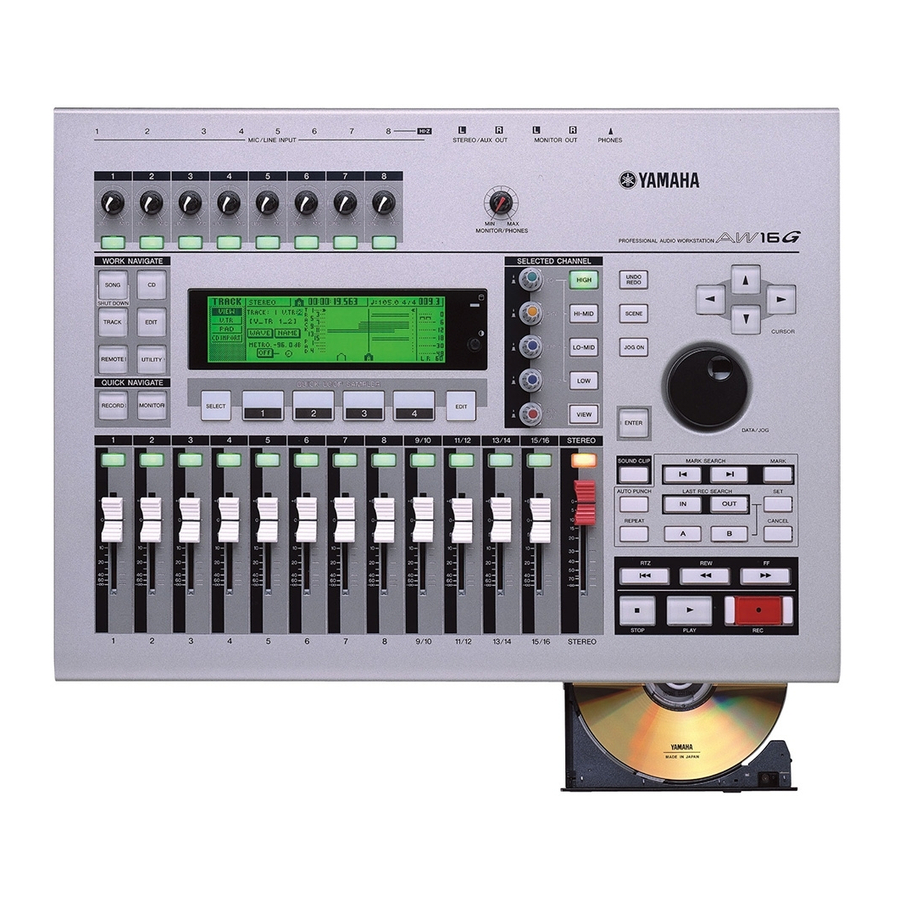Yamaha AW16G Recording 101 소유자 매뉴얼 - 페이지 18
{카테고리_이름} Yamaha AW16G Recording 101에 대한 소유자 매뉴얼을 온라인으로 검색하거나 PDF를 다운로드하세요. Yamaha AW16G Recording 101 27 페이지. Professional audio workstation

3.
Turn the [PAN] knob to adjust the panning of the selected track.
4.
To adjust the panning for additional tracks first press the [TRACK SEL]
key of the desired track and then turn the [PAN] knob to the desired pan
position.
Panning Guidelines
There are no rules for setting the panning when doing a mixdown but here
are some general guidelines.
Drums:
The kick drum (bass drum) and the snare drum are usually panned
up the center. The rest of the instruments would be panned
according to how you would actually hear them if you were facing a
set of drums. For example, the low tom would be panned to the left
while the hi-hat would be panned a little to the right.
Bass:
This is almost always panned straight up the center.
Guitars:
Rhythm guitars are usually panned to either the 9 o'clock position
or the 3 o'clock position. You can try panning them a little farther
out or closer in depending upon the other instruments in the mix.
Guitar solos are usually panned either straight up the center or just
a little off to one side or the other so they won't conflict with the
vocals.
Keyboards: If the keyboard is a stereo patch then you would pan one side all of
the way to the left and the other side all of the way to the right. If it
is a mono patch you would usually pan it opposite of any rhythm
guitars you may have.
Vocals:
The lead vocals are almost always panned straight up the center. If
the background vocal is just a double of the lead vocal or is a single
An Example of Common Drum Set Panning
15
